Introduction
SECOND EDITION
to Probability
Dimitri
P. Bertsekas
and John N. Tsitsiklis
Massachusetts Institute
of Technology
WWW site for book information
and orders
http://www.athenasc.com
~ Athena Scientific
, Belmont, Massachusetts
�
Athena Scientific
Post Office Box 805
Nashua, NH 03061-0805
U.S.A.
Email: info@athenasc.com
WWW: http://www.athenasc.com
Cover Design:
Ann Gallager
© 2002, 2008 Dimitri
reserved.
All rights
electronic
or mechanical
tion storage
P. Bertsekas and
John N. Tsitsiklis
may be reproduced
in any form by any
No part of this book
means (including
photocopying,
and retrieval)
without
permission
in writing
recording,
from the publish
or informa
er.
Publisher's Cataloging-in-Pub
lication
Data
P., Tsitsiklis,
phical
John N.
to Probability
references
Bertsekas, Dimitri
Introduction
Includes bibliogra
L Probabilities. 2. Stochastic
QA273.B475 2008 519.2 -21
Library of Congress Control
ISBN 978-1-886529-23-6
Number:
and index
2002092167
Processes. I. Title.
�
To the memory of
Pantelis
Bertsekas
and Nikos Tsitsiklis
�
Preface
Probability
is common sense reduced to calculation
Laplace
course
This book is an outgrowth
ability
of Technology.
The course
is attended
("Probabi
listic
of our involvement
in teaching an
Massachus
Analysis'�)
at the
Systems
introductory
prob
etts Institute
by a large number of students with diverse back
spectrum
from
to the
s. They span the
entire
and from the engineering school
graduate
and a broad range of interest
students,
of management. Accordingly,
grounds,
freshmen to beginning
school
simplicity
has been to develop
a manner that combines intuitive understanding
in exposition and sophistication
the abilit
we have tried to strik
e a balance
between
in analytical reasoning. Our key aim
y to construct and analyze probabi
listic
models in
and mathematical
rigorous analysis
has been
proofs do not
exposition. At the same time, some of
precision.
In this spirit, some of the more mathematically
ely explain
or intuitiv
way of an otherwise
is developed
just sketched
stand in the
this analysis
lems, that are included at the end of the corresponding
some of the subtler
the more attentive
ed in the text. so that complex
simple
level of advanced
mathematical
issues
reader.
calculus)
are hinted
(at the
at in footnotes
in theoretical
prob
chapter. FUrthermore,
addressed
to
The book covers
the fundamentals
of probability
theory (probabilistic
mod
and continuous random variables,
els, discrete
multiple
limit theorems) , which are typically part of a first course
also contains,
4-6 a number of more advanced
instructor
Chapter
of random variables,
transforms, a more advanced
estimation,
to match the goals of a particula
4, we develop
in Chapters
least squares
can choose
random variables,
and
on the subject
. It
from which an
topics,
view of conditioning,
sums
normal distribu-
and the bivariate
r course. In particular, in
v
�
vi
Preface
tion. Furthermore,
to Bernoulli, Poisson, and Markov processes
in Chapters
5 and 6, we provide
.
a fairly detailed
introduction
Our M.LT. course
of the material on the
normal (Section
all seven chapters
bivariate
semester,
with the ex
4.7), and on conti
in a single
covers
nuous
ception
time Markov chains
on stochastic
on foundational
(Section
6.5). However, in an alternative
processes could be omitted, thereby allowing
the material
course,
additional
emphasis
material, or coverage
of other topics
of the instructor's
choice.
Our most notable omission
in coverage
all the basic elements
and continuous models, and
estimation,
of parameter
is an introduction
of Bayesian statistics,
in the form of
estimation,
we
hypothesis
least squares
or non-Bayesian
to statistics.
develop
While we
Bayes' rule for discrete
do not
testing.
enter the subjects
The problems
that supplement
the main text are divided
in three categories
:
(a) Theoretical
problems:
The theoretical
problems
nent of the text, and ensure
(marked by *) constitute
that the mathematically
reader
an important compo
oriented
Their solutions
to solve many
solutions.
will find here a smooth development
are given
of them, especially
text, but an ambitious reader
chapters,
in earlier
in the
without
major gaps.
may be able
before looking
at the
problems,
theoretical
of difficulty. These are representative
covered
the text contains
several
of the
in recitation
l sessions
and tutoria
at
mechanism
through
which many of our students
(b) Problems in the text: Besides
levels
of various
that are usually
problems,
problems
M.LT., and are a primary
learn the material.
solve these problems,
enhance
the book's www site
Our hope is that students
elsewhere
and then refer to their solutions
will attempt
to calibrate
their understanding
of the material. The solutions
are posted
to
and
on
http://www.athenasc.com/probbo
ok.html
(c) Supplementary problems:
There is a large (and growing)
collection
of ad
included in the book, but is made available
which is not
problems,
ditional
at the book's
homework or exam problems
elsewhere
these additional
available
problems
will use them for a similar
www site. Many of these problems
have been assigned
as
at M.I.T., and we expect that
rs
of
the solutions
purpose.
accessible,
While the statements
instructo
are made
are publicly
from the authors only to course
instructors.
our debt to several
people
who contributed
We would like to
acknowledge
book. Our writing
probability
for a popular
for several
in various ways to the
sponsibility
had taught
zation
various
used in recitation
in AI's classic
sessions
of the subject that
topics
textbook,
decades.
We were thus fortunate
had stood the test of time,
project
began when we assumed re
class at M.LT. that our colleague
Al Drake
to start
with an organi
and a rich set of material that
a lively presentation
of the
had been
and for homework.
We are thus indebted to Al
Drake
�
Preface
vii
for providing
a very favorable set of initial
conditions.
We are thankful to the
several
colleagues who have either
taught
from the
draft of the book
with valuable
de Veciana. Eugene Feinberg,
Ilya Pollak, David Tse, and Terry Wagner.
feedback.
In particular,
we thank Ibrahim
at various universities
or have read it, and have provided
us
Abou Faycal, Gustavo
Bob Gray, Muriel Medard, Jason Papastavrou,
The teaching assistants
for the M.LT. class have been very helpful. They
to various drafts, they developed
problems
and solutions
pointed out corrections
suitable
they provided
Reaching
a robust
thousands
for the class, and through
mechanism
interac
their direct
for calibrating
students
the level of
the material.
at MJ. T. at an early stage in their
tion with the student
body,
of bright
was a great source
of satisfaction for us. We thank them for their valu
being patient
while they were taught
from a textbook-in
studies
able feedback and for
progress.
Last but not least, we are grateful to our families
for their support
through
out the course of this long project.
P. Bertsekas,
dimitrib
@mit.edu
Dimitri
John N. Tsitsikl
is, jnt@mit.edu
Cambridge,
Mass. , May 2002
�
v iii
Preface
Preface
to the Second Edition
This is a substantial
material
and the addition
by about 25 percent. The main changes
of new material. The length
revision of the
1st edition,
involving
are the following:
a reorgani
zation
of the book has increased
of old
(a) Two new chapters
on statistica
l inference
have been added. one on Bayesian
and one on classical
main concepts
through
some key examples.
methods.
Our philosophy
understanding of the
main methodologies
has been to
focus on
the
and to facilitate
(b) Chapters
3 and 4 have been revised,
in part to accommodate
the new
inference
material of the
tion. Section
omitted
4.7 of the
from the new edition,
1st edition
to streamline
chapters and in part
the presenta
(bivariate
normal distribution)
has been
but is available at the book's website.
(c) A number of new examples
and end-of-chapter
problems
have been added.
The main objectiv
e of the
new edition
is to provide
to give them the option
Note that Chapters
of including
6-7, and Chapters 8-
flexibility
to instructors
of material,
and in particular
in their choice
an introduction
9 are mutually
Furthermore,
from Chapter
offerings
based on this book are:
to statistical
independent
inference.
, thus allowing
Chapter
4 are needed for Chapters
4 is not needed for Chapters
for different paths through
the book.
Sections
4.2-4.3
8 and 9. Thus, some possible
course
5-7, and only
(a) Probability
and introduction
Chapters
1-3, Sections
4.2-4.3,
Chapter
5, Chapters
to statistical
8-9.
inference:
(b) Probability
and introduction
with possibly
a few sections
to stochastic
from Chapter
processes:
4.
Chapters
1-3 and 5-7,
We would like to express
our thanks to various
colleagues
valuable
of the material
comments on the material
tributed
ganization
Vivek Goyal, Anant Sahai, David Tse, George Verghese,
Wyatt have been very helpful in this regard. Finally, we thank Mengdi Wang
for her help with
for the new chapters.
in the new chapters.
Ed Coffman, Munther
in the 1st edition
and problems
figures
Alan Willsky, and John
Dahleh,
who have con
and/or the or
P. Bertsek
Dimitri
John N. Tsitsiklis,
as, dimitrib@
mit.edu
jnt@mit.edu
Cambridge,
Mass., June 2008
�
Contents
.
. .
1. Sample Space and Probabil
ity
1.1. Sets . . . . . .
1 .2. Probabilistic
1 .3. Conditional
1 .4. Total Probability
1 .5. Independence
1 .6. Counting . . . . .. .
1 .7. Summary and Discussion
. . . . . .
Models. . . . .
Probability
. . .
Theorem and Bayes' Rule
Problems
. .. . . . .
.
2. Discrete Random Variables
. . . . .
Mass Functions
of Random Variables
2.1. Basic Concepts
2.2. Probability
2.3. Functions
2.4. Expectation,
2.5. Joint PMFs of �lultiple
2.6. Conditionin
2 .7. Independence
2.8. Summary and Discussion
. .. . . .
Mean, and Variance
Random Variables
g . . . . . .
Problems
. . . .. .. .
3. General Random
Variables
3 . 1 . Continuous Random Variables
3.2. Cumulative
ion Functions
3.3. Normal Random Variables
3.4. Joint PDFs of Multiple
3.5. Conditioning
.
3.6. The Continuous Bayes' Rule . .. . . .
. . . . .
Distribut
. . . .. . .
and PDFs
Random Variables
. p.1
. p.3
. p.6
p. 18
p. 28
p. 34
p. 44
p.51
p. 53
p. 71
p.72
p. 74
p.80
p. 81
p. 92
p. 97
p. 109
p.1 15
p.1 19
p. 139
p.I40
p.I48
p.I53
p.I58
p.I64
p.I78
ix
�
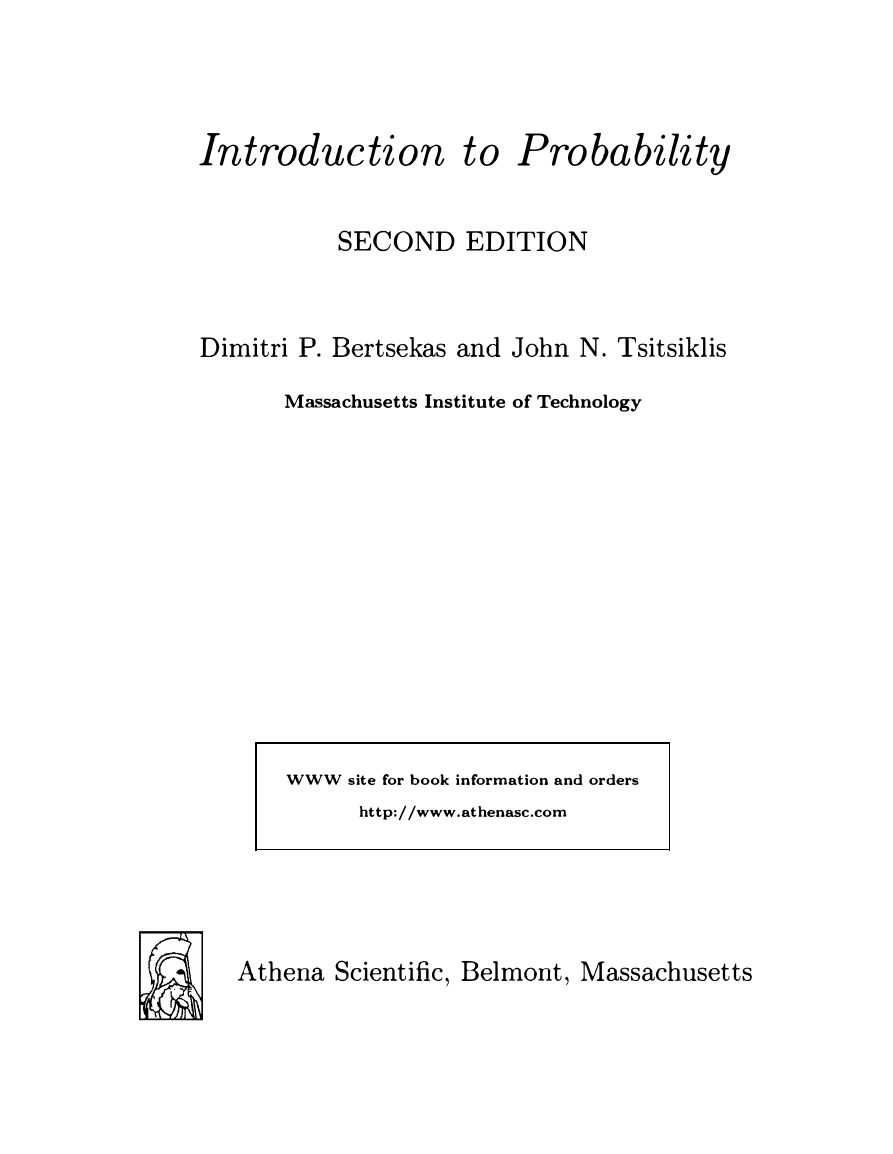
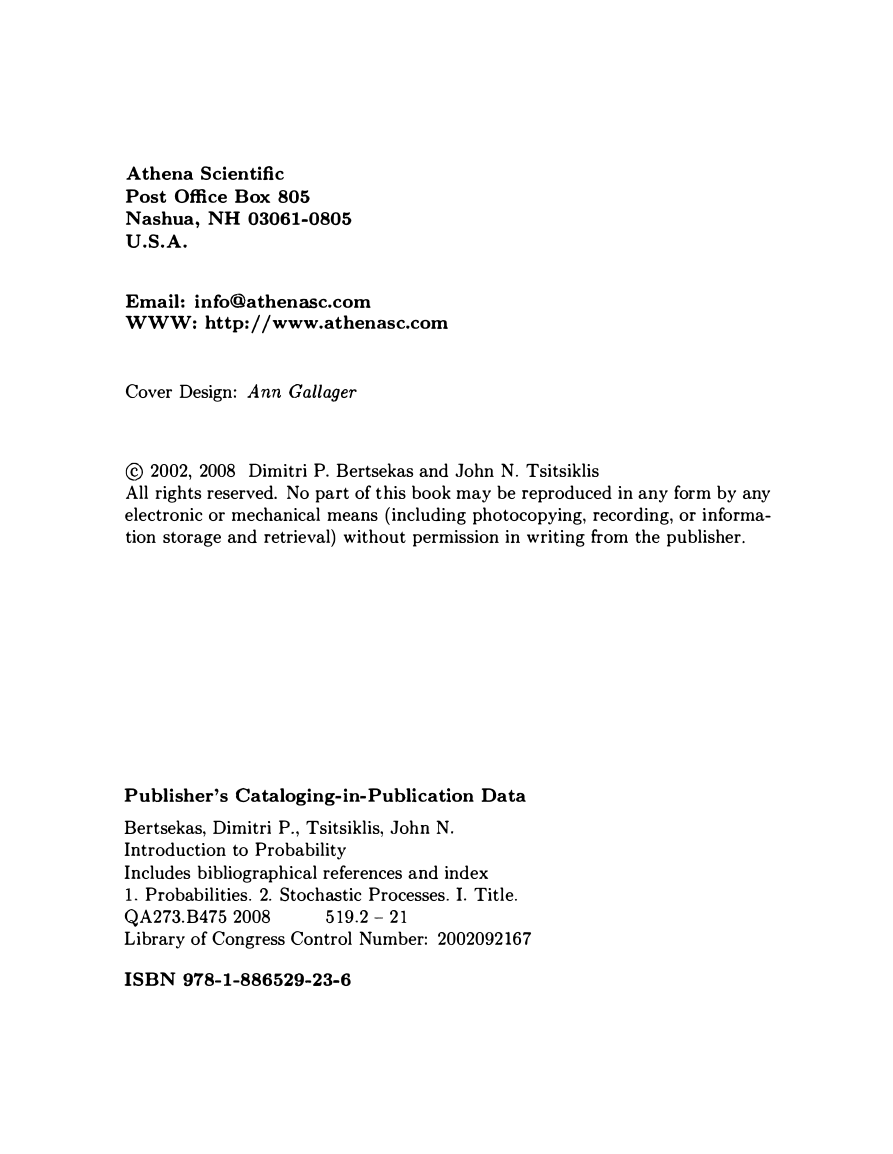
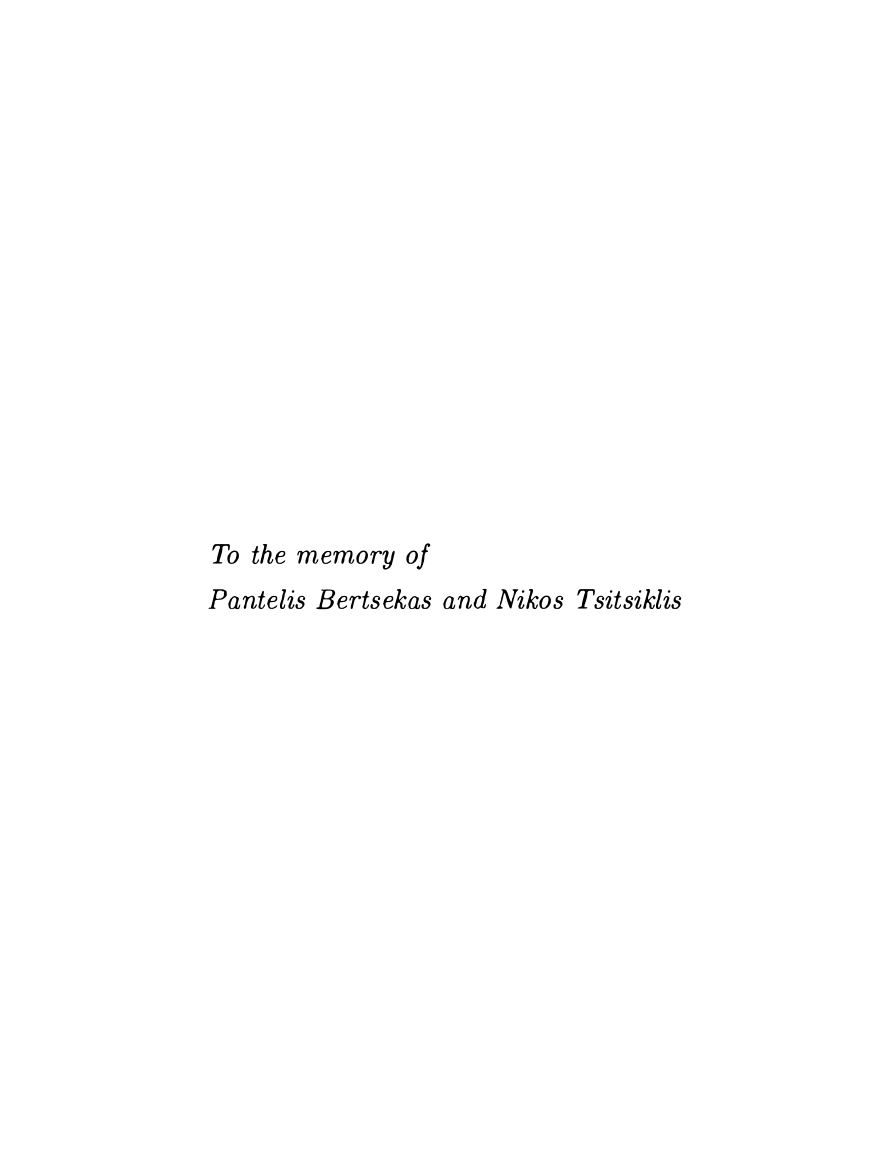
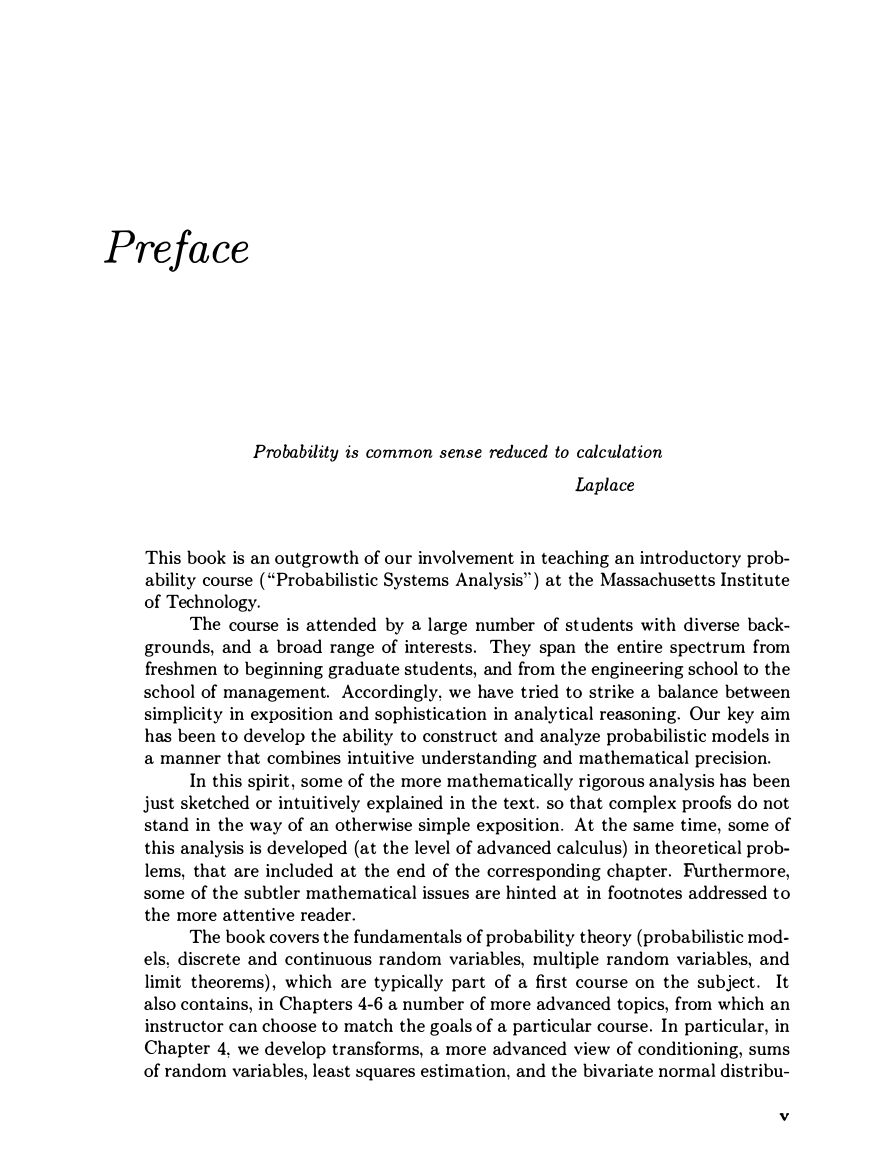
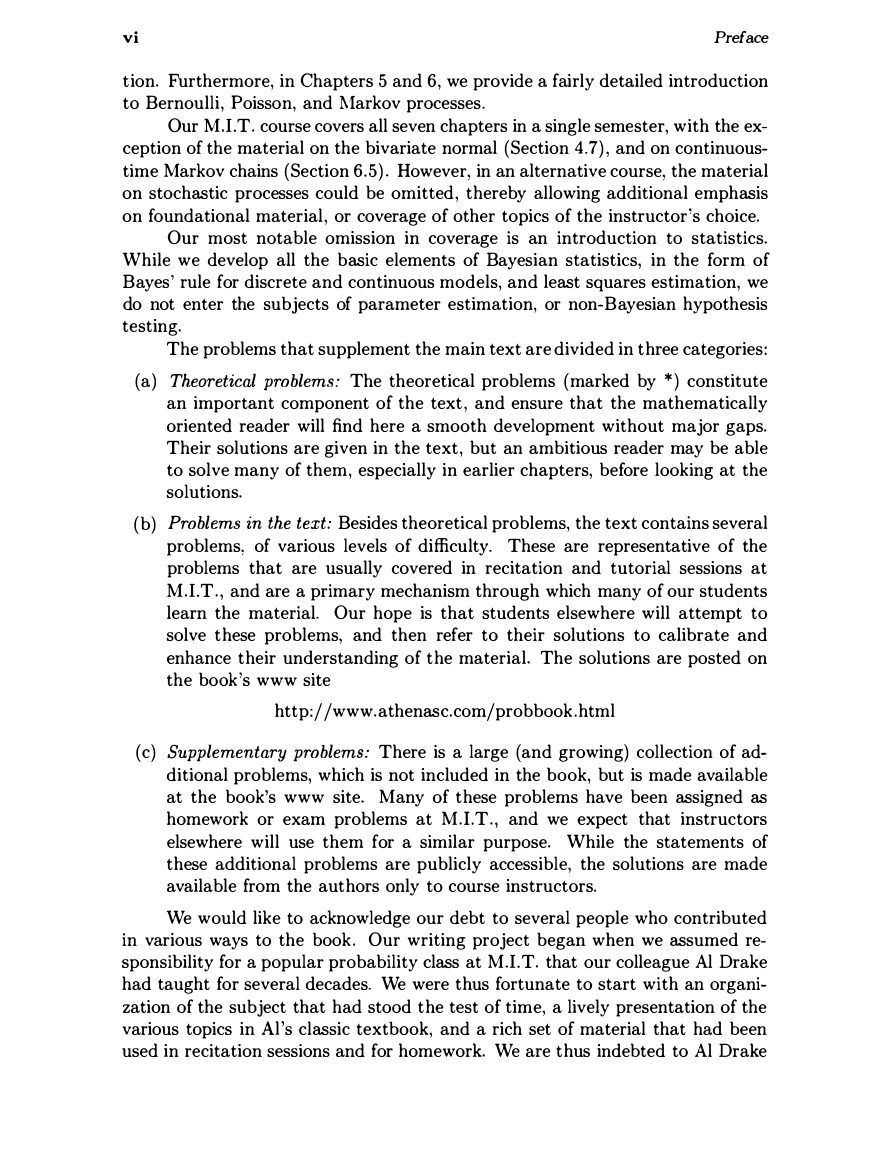
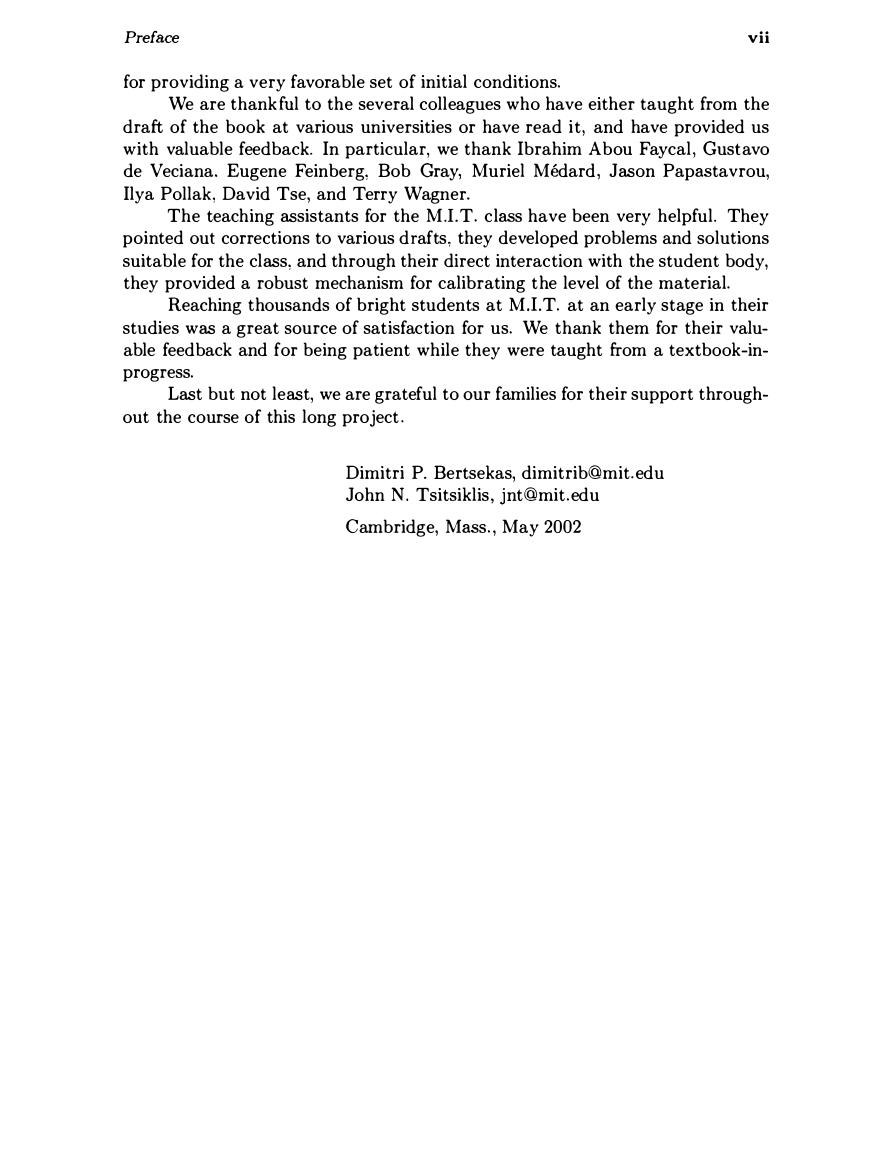
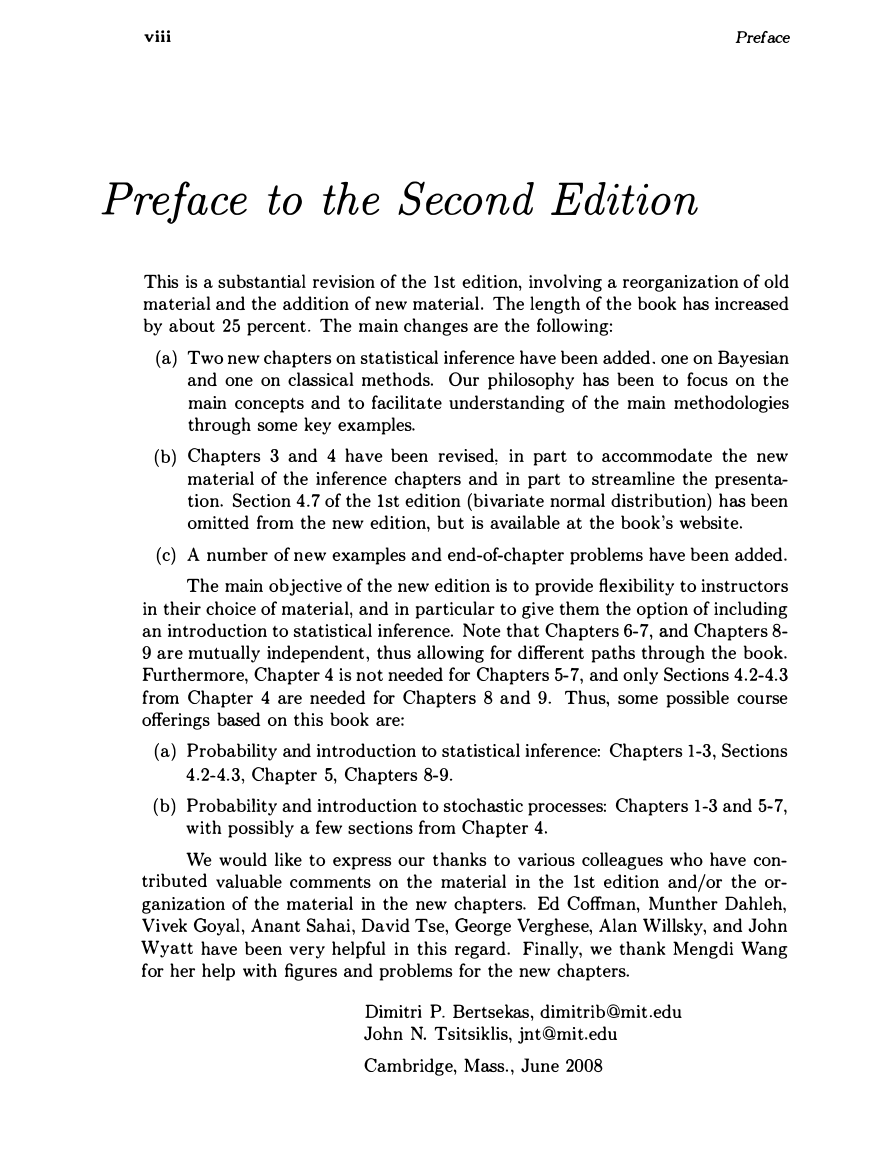
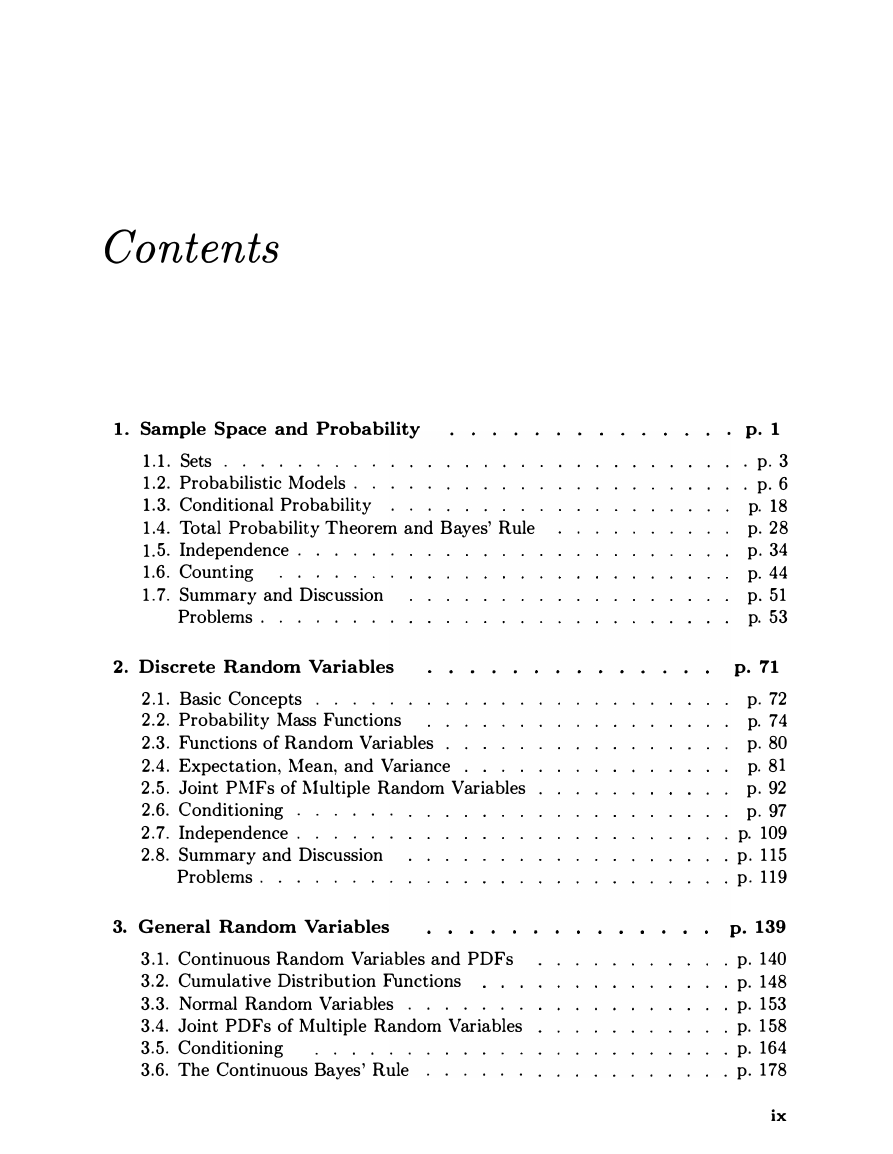








 2023年江西萍乡中考道德与法治真题及答案.doc
2023年江西萍乡中考道德与法治真题及答案.doc 2012年重庆南川中考生物真题及答案.doc
2012年重庆南川中考生物真题及答案.doc 2013年江西师范大学地理学综合及文艺理论基础考研真题.doc
2013年江西师范大学地理学综合及文艺理论基础考研真题.doc 2020年四川甘孜小升初语文真题及答案I卷.doc
2020年四川甘孜小升初语文真题及答案I卷.doc 2020年注册岩土工程师专业基础考试真题及答案.doc
2020年注册岩土工程师专业基础考试真题及答案.doc 2023-2024学年福建省厦门市九年级上学期数学月考试题及答案.doc
2023-2024学年福建省厦门市九年级上学期数学月考试题及答案.doc 2021-2022学年辽宁省沈阳市大东区九年级上学期语文期末试题及答案.doc
2021-2022学年辽宁省沈阳市大东区九年级上学期语文期末试题及答案.doc 2022-2023学年北京东城区初三第一学期物理期末试卷及答案.doc
2022-2023学年北京东城区初三第一学期物理期末试卷及答案.doc 2018上半年江西教师资格初中地理学科知识与教学能力真题及答案.doc
2018上半年江西教师资格初中地理学科知识与教学能力真题及答案.doc 2012年河北国家公务员申论考试真题及答案-省级.doc
2012年河北国家公务员申论考试真题及答案-省级.doc 2020-2021学年江苏省扬州市江都区邵樊片九年级上学期数学第一次质量检测试题及答案.doc
2020-2021学年江苏省扬州市江都区邵樊片九年级上学期数学第一次质量检测试题及答案.doc 2022下半年黑龙江教师资格证中学综合素质真题及答案.doc
2022下半年黑龙江教师资格证中学综合素质真题及答案.doc